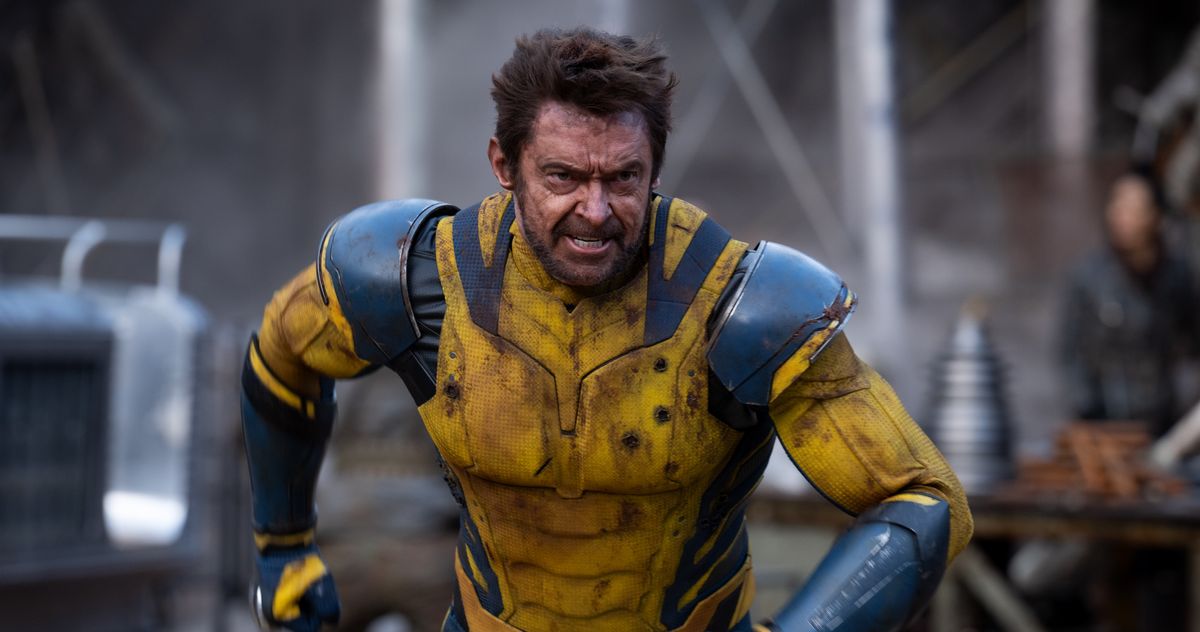Photo: Jay Maidment/20th Century Studios/MARVEL
Warning: Spoilers ahead for Deadpool & Wolverine.
You might reasonably think that, representing the X-Men’s big arrival in the Marvel Cinematic Universe, Deadpool & Wolverine would have a straight answer about when and where it’s set. Well, you would be mistaken.
The X-Men movies have always played fast and loose with continuity, leading to a timeline that contradicts itself every few entries. Oh, Mystique and Charles Xavier, who never once mention or acknowledge each other in the original trilogy, were actually adopted siblings with a weird amount of physical chemistry in the prequels? Sure, that tracks. Just like in the comics, these discrepancies stem from new creators taking dramatic liberties. But now that the X-Men have entered the continuity-obsessed MCU, the question of when their stories take place is at least nominally important — especially as Marvel trudges through its “Multiverse Saga” and strings together several existing timelines.
Even compared with Fox’s messy, now-defunct X-Men franchise, Marvel’s 34th feature weaves a whole new web of multiversal inconsistencies, though not without good reason. For one thing, Deadpool seems to simultaneously exist in the mainline “Earth-616” universe — in which the Avengers battle Thanos and so forth — as well as on “Earth-10005,” home to the X-Men movies. The Avengers and X-Men don’t occupy the same universe (at least not yet), so it stands to reason that they’re separated by these metafictional walls. As you’re probably aware, Deadpool isn’t exactly a fan of walls and likes to break them four at a time.
The Merc With the Mouth has referenced the Avengers plenty in the past because he’s a joke-driven character, but Deadpool & Wolverine sees him sincerely trying to become one of them and interviewing with Happy Hogan (Jon Favreau) in 2018. Granted, he could theoretically have used Cable’s time-travel device from Deadpool 2 to casually universe-hop, but it actually benefits his story if this isn’t the case since living full time in the Avengers’ shadow makes people consider him less of a hero.
Six years later, his story continues on Earth-10005, where his and the X-Men’s movies have all unfolded, rather than on Earth-616. We don’t ever see him jump between these alternate timelines, and in one of Deadpool’s flashbacks, his then-girlfriend, Vanessa (Morena Baccarin), casually discusses his rejection from the Avengers as though she’s aware of them too. This is a fun way to hand-wave over the idea that Deadpool has always known of the MCU while living in a different reality. But these specifics also have a confounding ripple effect.
Taken at its word, the rest of the story (which unfolds six years later) is set in 2024 but opens with Deadpool desecrating Wolverine’s shallow grave from the end of Logan. Wolverine’s corpse has since decomposed, leaving only his adamantium skeleton, so it has been at least a few weeks, if not a few years, since the end of that film. However, Logan is, according to its dialogue, very explicitly set in a dystopian 2029. What gives?
This wouldn’t be the first time such a discrepancy mucks up the MCU. In Captain America: Civil War, Vision (Paul Bettany) mentions that six years have passed since Tony Stark revealed his secret identity in Iron Man. However, Spider-Man: Homecoming — which opens in the aftermath of The Avengers, a film set after Iron Man — jumps forward eight years according to onscreen text, in order to arrive at the events of Civil War. Mathematically, that doesn’t line up, and this eight-year gap has been treated like a major gaffe even by Marvel president Kevin Feige, who explained that it will be sorted out in some official capacity (an eventual book on the MCU’s timeline went on to call it a mistake).
In keeping with the credo of artistic liberty, however, an eight-year gap makes sense for Homecoming since, in that time, the daughter of the villainous Vulture (Michael Keaton), Liz (Laura Harrier), goes from making rudimentary crayon scribbles of the Avengers to attending high school with Peter Parker (Tom Holland). Similarly, for the sake of ushering Deadpool into the largely present-day Marvel Cinematic Universe — while having him exist in a world where Wolverine has died — these specific dates have been retconned and the timelines have been fudged.
Where, then, does that leave the Wolverine we do see in the film? He’s from a different “Earth” entirely and isn’t nearly as old as the character was in Logan (set in either 2024 or 2029 depending on whom you ask), which means one of two things: Either the year is the same in his continuity as it is in the MCU — 2024, according to Deadpool & Wolverine — and he has simply retained his healing abilities (which the character had begun to lose in Logan, causing him to visibly age), or, more plausibly, this is set several years before his story goes on to resemble the events of Logan.
We can guess as much because this “worst Wolverine,” as he’s called by TVA agent Paradox (Matthew Macfadyen), exists in a timeline that closely mirrors what we’ve already seen in Fox’s X-Men movies. He drinks because his friends and fellow X-Men are all dead, which is exactly where we find him at the start of Logan. And when the psychic villain Cassandra Nova (Emma Corrin) fiddles around in his subconscious, we’re shown brief flashes of footage from X-Men Origins: Wolverine, meaning he has probably already lived through some of what we saw in that movie, albeit with much more colorful X-Men costumes.
So there’s your answer. Deadpool & Wolverine takes place in the Marvel Cinematic Universe, but also in the Fox X-Men universe, in the year 2024 but after Wolverine died in 2029 — while drawing from an entirely different X-Men universe where it may or may not be 2024 (or … 2029). Finally, these movies have truly begun to resemble the comics they’re based on.

